DUNGEONS & DRAGONS (4th Edition)
This is Part 4 in a multipart series. (Part 1, Part 2 , Part 3).
What’s with all the different versions of D&D? Are there really 5 editions? If you’re new to the hobby, or maybe stopped playing back in the 80s, there can be a lot to sort out. In this article, we take a look at the 4th Edition of the world’s most popular role playing game: D&D 4E.
Note: Before we get too far into this discussion, it’s important to acknowledge something: the fourth edition of D&D is probably the most divisive version of the game. This article isn’t interested in fueling an edition war. However, it’s hard to talk about 4E without evoking strong feelings one way or the other.
4th EDITION HISTORY
When Wizards of the Coast wrote the previous version of Dungeons & Dragons (3rd Edition or 3E), they set out to build on a ruleset that had existed since 1978’s AD&D. However, the designers identified a set of rules and concepts they called the “sacred cows” of D&D.
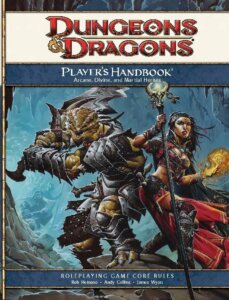
These were things the writers felt were intrinsic to what made D&D unique. Rules like how spells were prepared, or the function of certain classes, were off limits, for fear that doing so would result in a game that no longer “felt” like D&D.
The designers of 4th Edition were under no such restrictions. Rather than adhere strongly to the way things had been done in the past, 4E tries to recreate the feeling of D&D with new mechanics that emphasize a streamlined and modular play style. For example, rather than offering several classes that operate under different rules, 4E gives players a powers system that works similarly for martial characters, spellcasters, and hybrid classes. In 4E, wizards aren’t the only class who can pull off a really big attack a few times per adventure. And fighters aren’t the only class who can deal damage successfully round after round.
MECHANICS
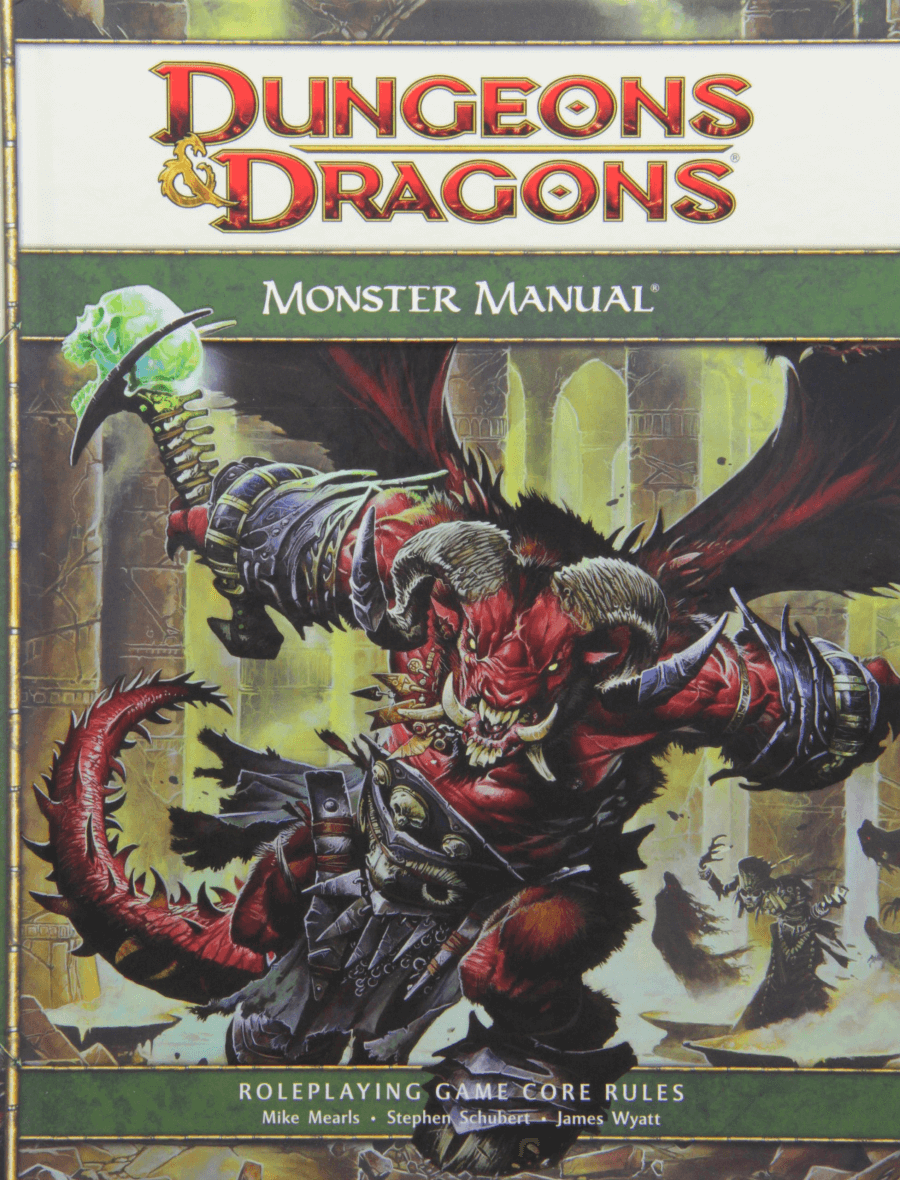
Perhaps the most noticeable change is the way 4E introduces character roles beyond race or class. In 4E, a class (whether a fighter, warlock, or something more esoteric like a seeker) fits into one of these roles. Each class is either a Controller, a Defender, a Leader, or a Striker. The roles help define what the player does at the table, hopefully ensuring that everyone is engaged and enjoying the game.
4th Edition leans heavily into the tactical, miniatures-based combat of D&D. (Tying in with the D&D Collectible Miniatures Game.) It also very tightly balances classes, encounters, and character abilities. The result is a game that feels really strategically weighty, which can be very satisfying, particularly in combat. For many, this “crunchy” aspect is an enjoyable layer of a balanced, strategic game.
RECEPTION
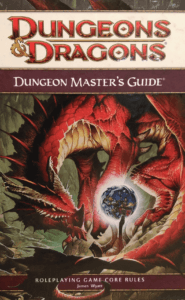
On the flip side, many powers in 4E allow you to move the enemy around on the battle mat. Others move yourself or your allies, and other things that just don’t work well if you’re playing “theater of the mind”. If you’re playing with a full range of maps and miniatures, great! If not, these begin to feel like wasted powers and rules to ignore.
Some players found the experience to feel too much like a board game, or too much like a video game, depending on one’s frame of reference. Each class has a number of powers, for example. Each of these is easily expressed on cards and limited for use to once per day, or once per encounter. So it’s really tightly designed and well-balanced, for good or for bad.
4E also made a lot of changes that some people say took it too far from the “feel” of D&D. Magic Missile, for example, doesn’t automatically hit, nor does it do d4-based damage. You don’t just roll against AC to hit, you might roll an INT attack against the target’s Reflex defense, or similar alternative kinds of attacks. It’s familiar, but different.
Its possible that the game would have been better received if it were called something OTHER than Dungeons & Dragons. In fact, the soul of the 4E design lives on in the 13th Age RPG, and 4E is still the basis of the various D&D board games.
APPEARANCE
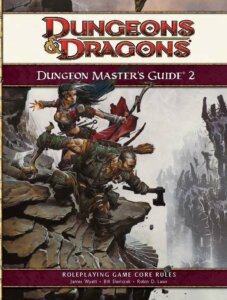
4th Edition follows the now-standard 3-book presentation of D&D (Player’s Handbook, Dungeon Master’s Guide, Monster Manual). The cover art for the core rulebooks was done by fantasy artist Wayne Reynolds. ( Wayne is notably also a prolific cover artist for the Patherfinder RPG).
Eventually, the line expanded to include several core books: Player’s Handbook 2, Player’s Handbook 3, Dungeon Master’s Guide 2, and several Monster Manuals. This naming convention is somewhat unique among D&D editions. While AD&D had the Monster Manual II, and 3E/3.5E published a Player’s Handbook II as well as several numbered Monster Manuals, 4E fully embraced the model of “sequel” core rulebooks to expand the game.
DUNGEONS & DRAGONS ESSENTIALS
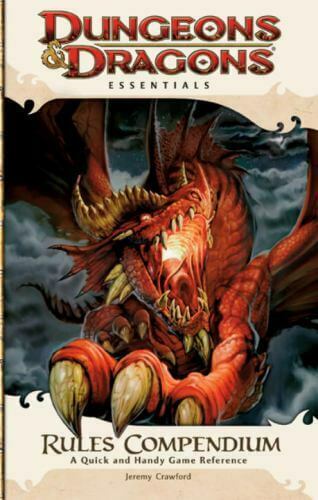
History: Published just two years after the debut of 4E (2010), the D&D Essentials line is a stand-alone series of products aimed at new and casual players. Similar to the Basic D&D line from previous editions, Essentials distills the current rules into a streamlined and approachable system. While largely compatible with 4E, it also exists as its own product line.
Appearance: The primary rulebook of the Essentials line is the Rules Compendium, a 320-page softcover book featuring a red dragon on the cover. Other products in this series include the Monster Vault, Dungeon Master’s Kit, and the 4E Starter Set. Some of these products (Monster Vault and Dungeon Master’s Kit) were published as boxed sets. These sets contain monster tokens, battle maps, and other supplementary materials.
4th EDITION FINAL THOUGHTS
Whether or not 4th Edition was ultimately successful depends on the metrics you use to measure it. Certainly, 5th Edition replaced it. However, every previous edition of D&D was eventually replaced by the next, and no one could argue that those editions failed. It’s also worth noting that a lot of 4E design lives on in D&D 5E. With word that another edition is coming to D&D in 2024, speculation is already on the wind about what that might entail. But that’s a story for another article, coming soon.
Next…
In the next installment of this series, we’ll take a little side trek into Pathfinder, and then dive into 5e! Or, check out Part 1, Part 2 , Part 3.
